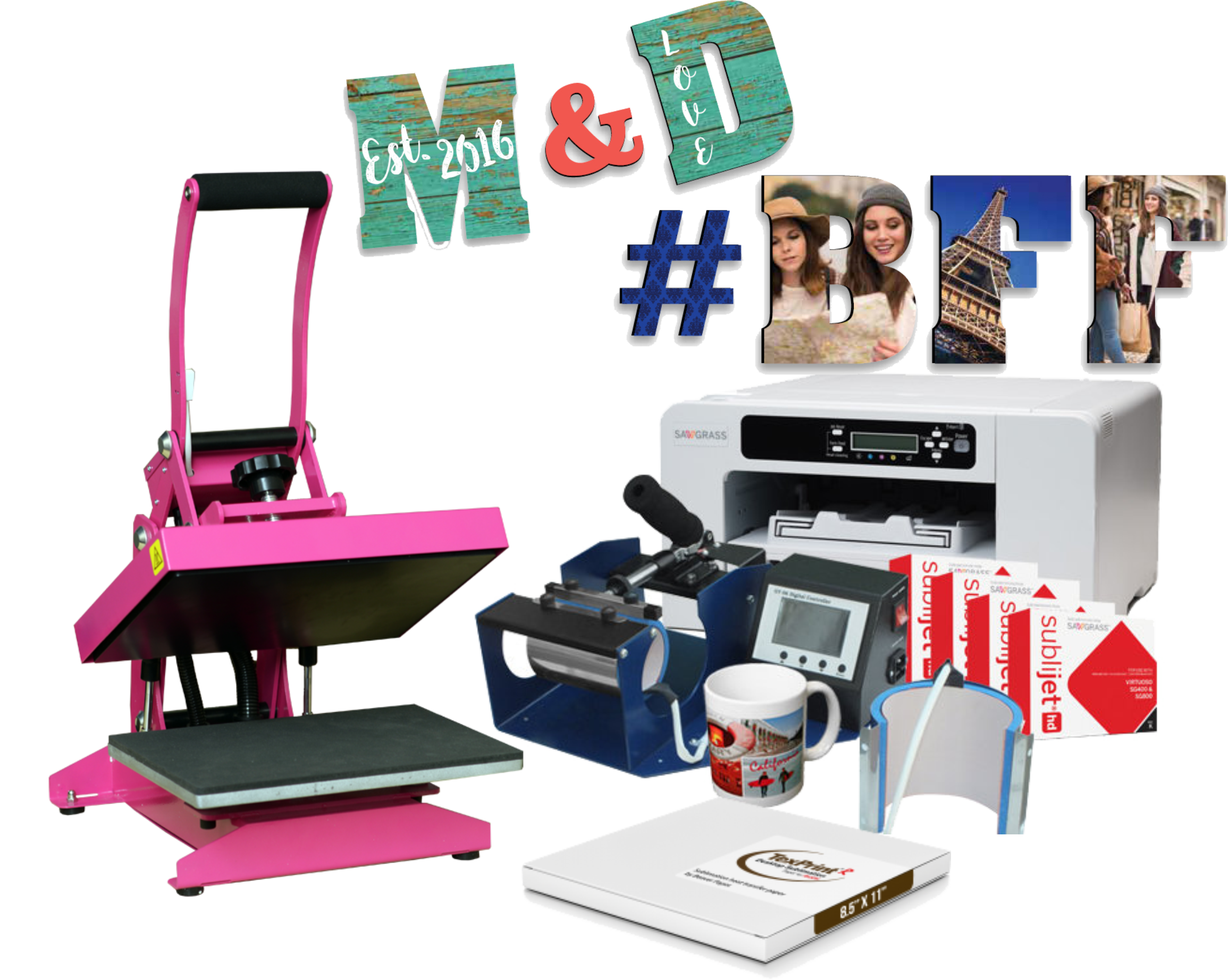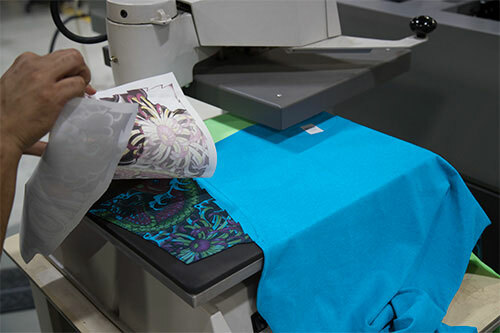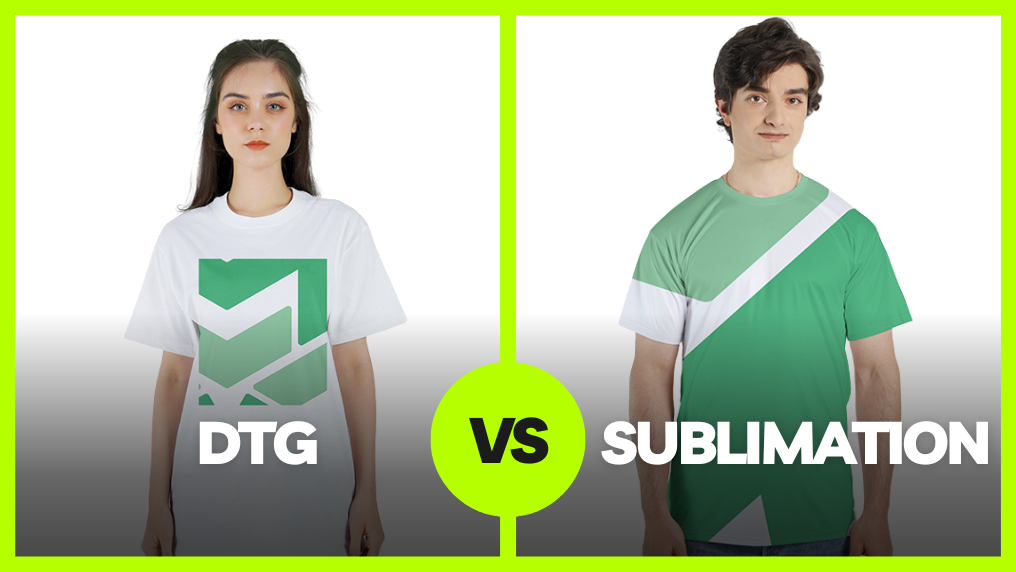The Best Guide to Sublimation Printing for Custom-made Garments
The Rise of DTF Printing: Exploring Its Benefits and Applications
The development of Direct to Film (DTF) printing innovation is changing the personalized garments sector, giving remarkable advantages and a broad range of applications. As the hunger for personalized items proceeds to broaden, recognizing how DTF printing can fulfill these evolving requirements is significantly vital.

Comprehending DTF Printing Technology
Recognizing DTF Printing Innovation marks a considerable development in the fabric printing industry, particularly for its convenience and performance. Direct-to-Film (DTF) printing is a sophisticated process that entails printing styles onto special transfer movies, which are then transferred onto fabric using heat and stress. Unlike conventional methods, DTF printing does not need pre-treatment of the fabric, making it possible for a more structured process.

When cured, the movie is positioned onto the fabric, and a heat press transfers the design by applying consistent heat and pressure. This leads to lively, premium prints that stick flawlessly to numerous textile kinds, including cotton, polyester, and blends (sublimation printing). The modern technology's capacity to generate brilliant and complex designs with very little configuration makes it a game-changer in the fabric printing sector
Key Benefits of DTF Printing
One of the crucial advantages of DTF printing is its remarkable flexibility, which enables top notch prints on a wide variety of fabric types. This ability extends beyond traditional cotton to consist of polyester, nylon, natural leather, and also combined textiles, making it excellent for diverse textile applications. This versatility decreases the need for multiple printing technologies, streamlining manufacturing procedures and decreasing general expenses.
One more considerable advantage is the superior print quality that DTF technology supplies. By utilizing dynamic, sturdy inks and exact application approaches, DTF prints maintain their color integrity and sharpness also after various laundries. This leads to a product that not only looks professional however likewise stands the examination of time, providing constant value to both end-users and producers.
Moreover, DTF printing uses a simplified workflow, which can cause increased effectiveness and performance. Unlike traditional techniques such as display printing, DTF does not require complicated configuration or comprehensive drying out times. This convenience of use makes it an appealing alternative for businesses of all sizes, permitting for quicker turnaround times and the capability to manage tiny to large production keeps up marginal trouble.
Applications in Customized Clothing
In the world of customized clothing, DTF printing sticks out as a game-changing modern technology that enables makers and developers to generate bespoke apparel with exceptional detail and high quality. Direct-to-film (DTF) printing has reinvented the customized garments market by using versatility in design, vivid shade recreation, and durability. This cutting-edge approach enables complex styles to be transferred onto a wide selection of textiles without endangering the stability of the material.
One significant application of DTF printing remains in producing customized t-shirts, hoodies, and sportswear. The capacity to publish complicated graphics with fine information and slopes makes it perfect for individualized garments, such as team attires and marketing product. DTF printing is this page especially helpful for one-off items and limited-run orders, supplying a efficient and affordable solution contrasted to standard display printing techniques (sublimation printing).
Additionally, DTF printing has actually opened brand-new avenues for designer to try out unique patterns and appearances, allowing the development of cutting-edge, avant-garde collections. This modern technology also sustains local business and independent musicians by decreasing the barriers to access in the personalized apparel market. Inevitably, DTF printing is reshaping the landscape of custom garments, combining artistic expression with technical development.
Flexibility Throughout Different Materials
Building on the improvements in custom-made garments, DTF printing's versatility throughout different materials even more improves its charm. Unlike standard printing approaches, DTF (Direct-to-Film) printing can be used to a substantial array of substratums, consisting of cotton, polyester, blends, natural leather, and even hard surface areas like timber and glass. This adaptability is achieved through the unique process where designs are printed onto a special film and after that transferred onto the material using a warm press. This enables lively, high-quality prints that retain their stability throughout different appearances and compositions.
The capacity to print on diverse products opens many possibilities for businesses throughout various markets. In the marketing products field, business can customize a vast variety of products, from lug bags and caps to cups and phone situations, all with the same printing modern technology. In the fashion business, DTF printing makes it possible additional hints for designers to experiment with complex patterns and vibrant shades on unusual materials, pushing the boundaries of creative thinking.
Additionally, DTF printing's compatibility with various products likewise translates to cost-efficiency and minimized waste, as producers can make use of the exact same equipment for several applications. This adaptability not only widens the range of product offerings however likewise boosts operational efficiency.
Future Leads of DTF Printing
As the market progresses, the future prospects of DTF printing are poised to revolutionize different sectors via continuous advancement and technological improvements. The rise popular for personalized apparel and advertising goods is driving the demand for extra efficient, flexible, and cost-effective printing techniques. DTF printing, with its capability to produce high-grade, durable prints on a wide variety of products, stands at the center of this transformation.
Arising fads show that DTF printing will progressively integrate with automation and AI modern technologies, improving manufacturing speed and decreasing labor expenses. Advanced software program remedies will certainly additionally enhance style accuracy, color matching, and print consistency, resolving several of the existing restrictions. Furthermore, environment-friendly inks and recyclable transfer films are expected to gain grip, straightening with worldwide sustainability goals.
Industries beyond fabrics are additionally checking out the potential of DTF printing. The technology's flexibility makes it ideal for applications in home design, auto interiors, and also medical devices. As r & d efforts remain to increase, the range of DTF printing will likely broaden, opening brand-new opportunities for industrial and creative applications. In recap, the future of DTF printing is brilliant, promising significant improvements and wider industry fostering.
Conclusion

Understanding DTF Printing Modern technology marks a substantial advancement in the fabric printing industry, especially for its versatility and performance. Direct-to-Film (DTF) printing is a sophisticated process that involves printing styles onto unique transfer movies, which are after that moved onto textile making use of warm and pressure. DTF printing is especially beneficial for one-off pieces and limited-run orders, providing a cost-effective and efficient solution contrasted to standard screen printing methods.
Unlike traditional printing navigate here approaches, DTF (Direct-to-Film) printing can be used to an extensive array of substratums, consisting of cotton, polyester, blends, natural leather, and even hard surface areas like wood and glass.DTF printing technology is revolutionizing the custom garments market by offering efficient, cost-efficient, and functional options for producing vibrant layouts on different fabrics without pre-treatment.